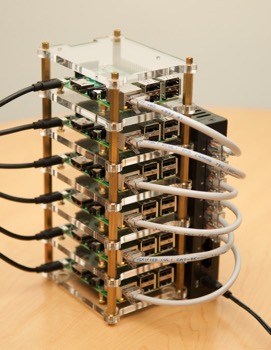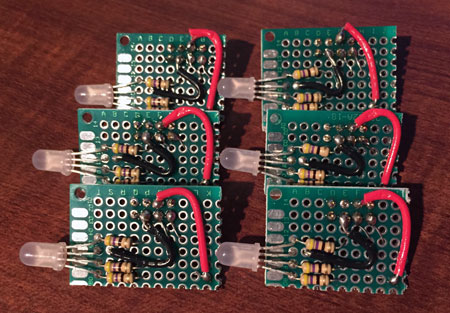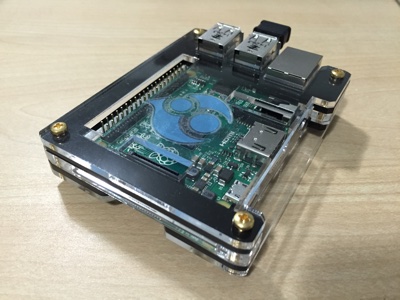
One of the first questions I'm asked by those who see the Dramble is, "How do I build my own?" Since I've been asked the question many times, I put together a detailed parts list, and maintain it on the Dramble's project wiki on GitHub: Raspberry Pis and Accessories.
For a little over $400, you can have the exact same setup, with six Raspberry Pi 2s, a network switch, a rack inside which you can mount the Pis, microSD cards for storage, a 6-port USB power supply, and all the required cables and storage!

I also include detailed instructions for building a small breakout board for the Raspberry Pi's GPIO with a software-controlled RGB LED, so you can do things like monitor web requests using the RGB LED, show server status, or even use your Raspberry Pi as a flashlight in the dark!
But what if you just want to tinker with Drupal (or other software), or play around with RGB LEDs and other hardware through a Raspberry Pi GPIO, but you don't want to purchase six of them?

I have a separate project, that I use for smaller-scale testing, Drupal Pi. This project aims at configuring a single Raspberry Pi with the LEMP stack (again, using Ansible), and then installing Drupal 8 on the Pi.
I used to also maintain a lightweight Raspbian distribution, Diet Raspbian, specifically tailored for headless Pi servers, but now Raspbian has an official 'lite' version, so use that instead!
Comments
When you link these Pi's together, and if say you used Pi 4 instead. This wouldn't improve graphics performance would it? I was curious if you could link several Pi 4's together to get faster graphics performance, but I feel maybe it would not work as the interface is too slow for it to be practical? Use case would be to have a cluster work together to view 4K video, without stuttering.
When did you switch to "dramble" over "bramble", out of curiosity (e.g. pidramble.com)?
Around 2014 I registered Pidramble.com and since then it's what I call my Drupal Bramble.